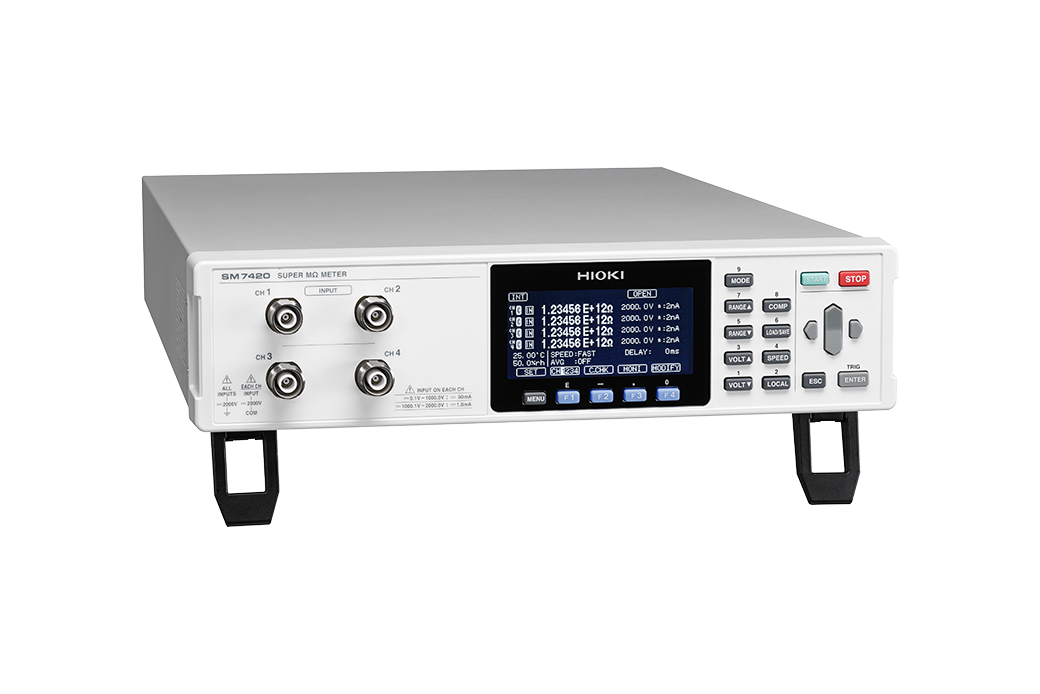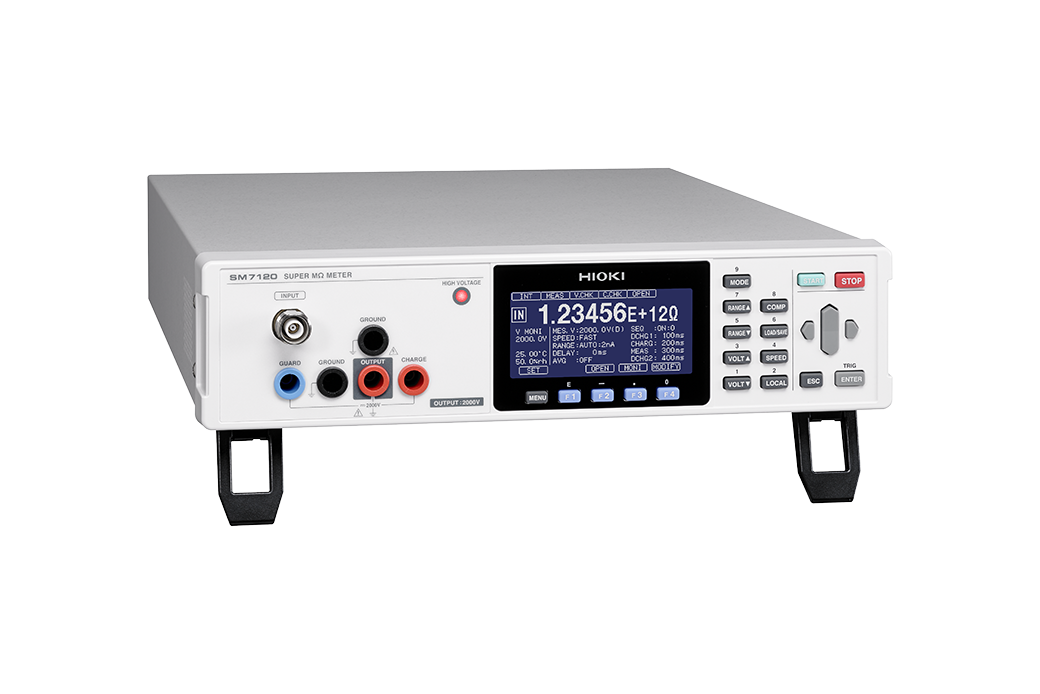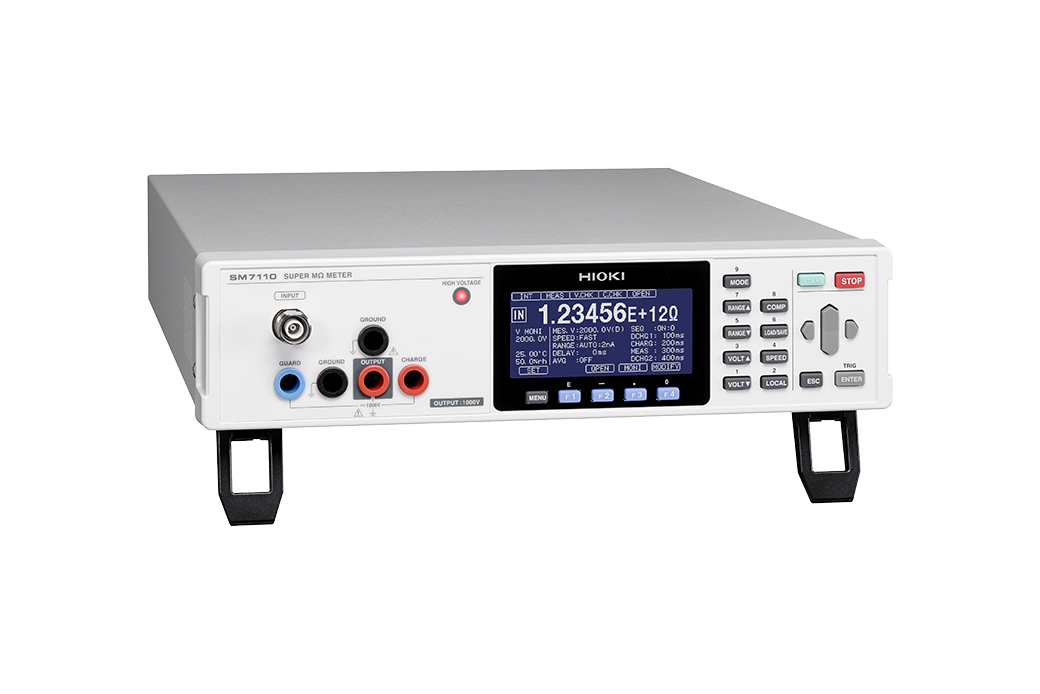How to Use the SM7420 for Simultaneous Multi-Point Insulation Resistance
Overview
Achieving efficient and accurate insulation resistance testing across multiple channels can be a challenge as the test system construction becomes more complex or cumbersome, potentially leading to difficulties in obtaining accurate measurements. The SM7420 Super Megohm Meter offers a powerful solution. As a 4-channel, high-sensitivity ammeter, it integrates seamlessly with your existing external power supply to enable simultaneous measurements at multiple test points. The use of specialized, noise-resistant triaxial cables ensures the integrity and accuracy of your data, even in demanding applications.
This application note provides a comprehensive guide on how to utilize the SM7420 for precise multi-channel insulation resistance measurements.
Understanding the basics of insulation resistance measurement with HIOKI's SM7000 series Super Megohm Meter
Hioki's Super Megohm Meters use the "constant voltage method." In this method, a constant voltage from an internal or external power supply is applied to the item being tested (the "device under test" or DUT). This simulates the electrical conditions the DUT experiences during normal operation. If the insulation has any weaknesses—like tiny cracks or flaws—an unwanted flow of electricity, known as leakage current, will leak through those spots.
This resulting leakage current is then measured using a built-in current meter (ammeter) inside the Super Megohm Meter. After that, the Super Megohm meter calculates the insulation resistance. It does this calculation using Ohm's law R = V/I from the known voltage V and measured current I, where R is the calculated resistance.
There are three fundamental steps to measuring insulation resistance using the SM7000 Series Super Megohmmeters.
- 1.Voltage application to the Device Under Test (DUT):
A stable voltage from your external power supply is applied to the DUT. - 2.High-sensitivity measurement of minute currents:
The SM7420's built-in high-sensitivity current meter accurately captures even the smallest leakage currents. - 3.Resistance value calculation:
The insulation resistance value is calculated using Ohm's Law (R = V / I) based on the set voltage for calculations and the measured current.
For more detailed information, please refer to the HIOKI "Insulation Resistance Measurement Handbook".
Increased inspection efficiency with multi-channel insulation resistance measurement
Both the Super Megohm Meter SM7420 and Super Megohm Meter SM7110/SM7120 can accurately measure insulation resistance but both instruments are built for different measurement applications. The user should decide which instrument to use based on the needs of their application.
SM7110s:
Like the SM7420, this Super Megohm Meter has a highly sensitive ammeter built in. Unlike the SM7420, it has a low-noise voltage source built in. This means the SM7110 is ideally suited to measure the insulation resistance on one channel without the need for an external voltage source.
SM7420:
This Super Megohm Meter features 4 built-in high-sensitivity ammeter with 4 measurement channels. It does not have an internal voltage source. By combining it with an external power supply, 4 channels of insulation resistance can be measured simultaneously. In addition it is possible to combine the SM7110s and SM7420 to perform simultaneous 5-channel measurement.
Table 1 Comparison of SM7110/SM7120 and SM7420
| Item | SM7110/SM7120 | SM7420 |
|---|---|---|
| Number of measurement channels | 1ch | 4ch |
| High-sensitivity current meter | Built-in | Built-in |
| Low-noise voltage source (measurement voltage source) | Built-in | External power supply required. |
| Ideal for | Users who want to measure insulation resistance easily | Users who want to measure multiple insulation resistances efficiently |
Connection with the Device Under Test (DUT)
Fig.1 shows how to connect the SM7420 when using your existing power supply for measurement.

Fig. 1 Connection example when measuring with your existing power supply
Fig. 2 shows how to connect the SM7110/SM7120 when using it as a power supply.
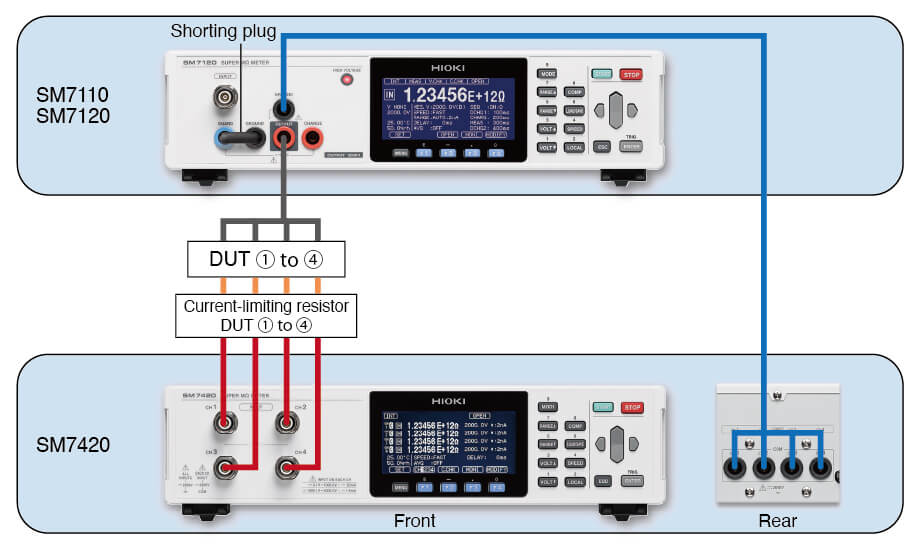
Fig. 2 Connection example when measuring with the SM7110/SM7120
Key considerations for accurate measurement
- Safety and reliability with current limiting
Hioki recommends using a current limiting resistor1 with the appropriate resistance value for each measurement channel. For information on how to determine the appropriate resistance, please refer to the SM7420 User's Manual, Appx. 4. - External power supply voltage input
For insulation resistance measurement, the Super Megohm Meter SM7420 requires the user to input the output voltage of the external power supply into the device setting before measurement. The maximum amount of voltage that can be input is 5 kV. In cases where only current needs to be measured (and resistance calculation is not needed), there is no limit to the amount of voltage that is used (It is assumed that the appropriate current limiting resistor is used to ensure input current stays within the instrument’s rating, preventing it from damage.). - Independent ammeter channels and grounding
The 4-channel ammeters are independent of each other. Connect the COM (short for "common terminal," also called "neutral terminal") of the channel you are using to the COM of the external power supply. (A branching cable must be fabricated to match the application.) Depending on the external power supply, the power supply's COM may already be grounded. In this case, measurement can be made by also grounding COM 1 through 4 of the SM7420. - External power supply considerations
When choosing an external power supply, please select one with minimal noise2, since noise decreases measurement accuracy. From Hioki's lineup, the Insulation Resistance Meter SM7110 can be used as a power supply for measurement by the Super Megohm Meter SM7420. It's specifications work well with the SM7420, making measurements steady and accurate.
1 In the event that a DUT is shorted, the current limiting resistor protects the SM7420 from malfunctioning. In addition, even if one DUT is shorted, measurement of other DUTs can continue without disconnecting the shorted DUT.
When using the Super Megohm Meter SM7110 as a power supply, its current limiting function can prevent the SM7420 from malfunctioning without inserting a current-limiting resistor. However, without current limiting resistors, measurement of other DUTs cannot continue without disconnecting the shorted DUT. For this reason, Hioki recommends the use of current limiting resistors, even when using the SM7110.
2 Noise such as ripple noise and switching noise (both variation in voltage caused by AC/DC conversion) can cause measurement error leading to reduced measurement accuracy.
Achieve more accurate measurement with GUARD connections
During measurements with the Super Megohm Meter, leakage current can bypass the DUT through cables and air. Since resistance measurement is based on sensed current, this leaked or lost current can make resistance measurement inaccurate. The guarding technique helps prevent the effects of leakage current by absorbing these leakage currents.
Utilizing Hioki cables is important because their "guard layer" captures stray currents, allowing for accurate guarding measurements.
The guarding technique is done by connecting the cable's guard layer in one of two ways as shown in fig. 3.
Option A. Connect the guard layer to the SM7420's COM terminal or the external power supply.
Option B. Connect the guard layer to the internal shield layer of the INPUT cable (red) of the SM7420.
By using the guarding technique, leakage current will not interfere with the measurement, ensuring accurate insulation resistance test.
Structure of shielding wire of the Hioki-made measurement leads
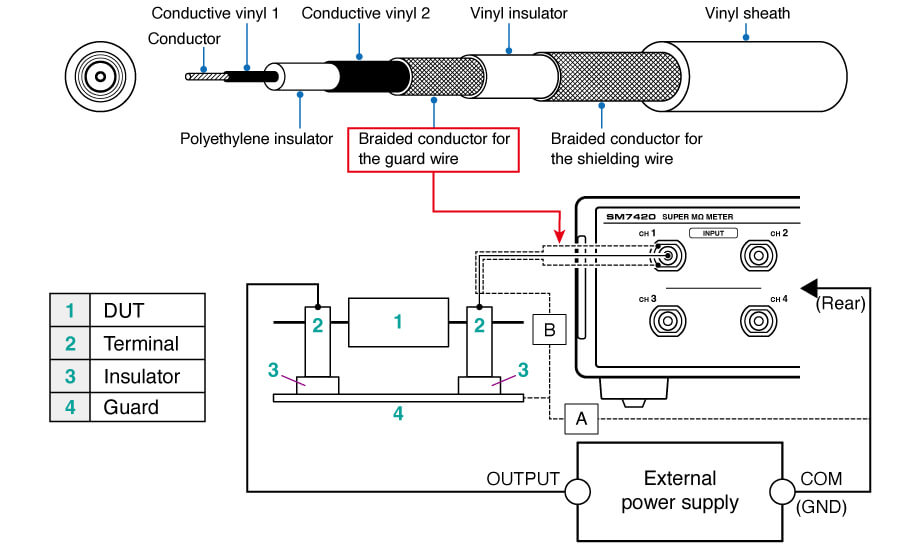
Fig. 3 Example of guarding
Performing 5-Channel Measurements with the SM7110/SM7120 and SM7420
By wiring as shown in fig. 4, 5 channels of insulation resistance measurement can be performed. This setup utilizes the four ammeters from the SM7420, plus one ammeter from the SM7110 and the SM7110's voltage source.
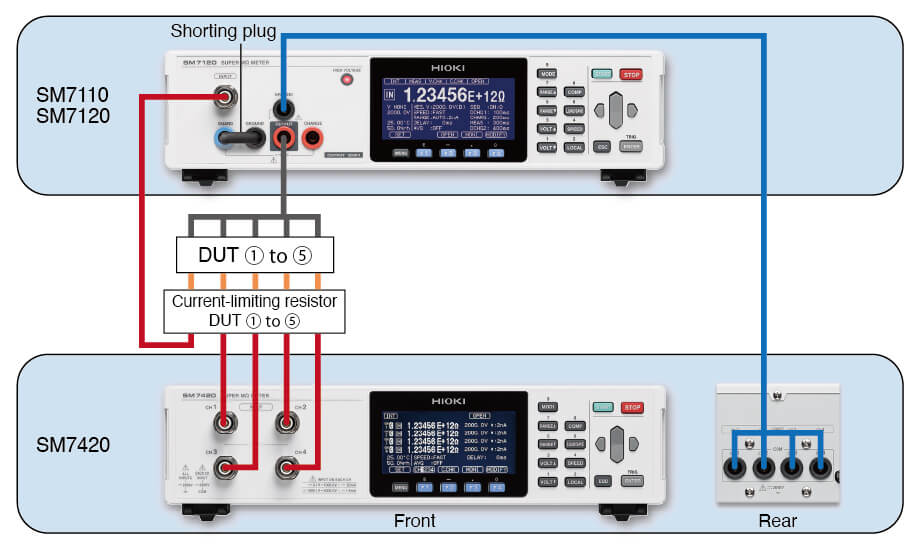
Fig. 4. 5-channel measurement with the SM7420 and SM7110
One last tip related to application software
The SM7420 is used in combination with an external power supply. Using Sequence Maker, a complimentary Microsoft Excel® COM add-in, it is easy to control multiple external power supplies and the SM7420.
Download the HIOKI Sequence Maker (A command send/receive add-in for Excel®) here.
For more detail about these products, please check the product page of either the Super Megohm Meter SM7420 or Super Megohm Meter SM7110. For a quotation or assistance in finding the best solution for a specific application, please contact your local Hioki representative through our contact form.

